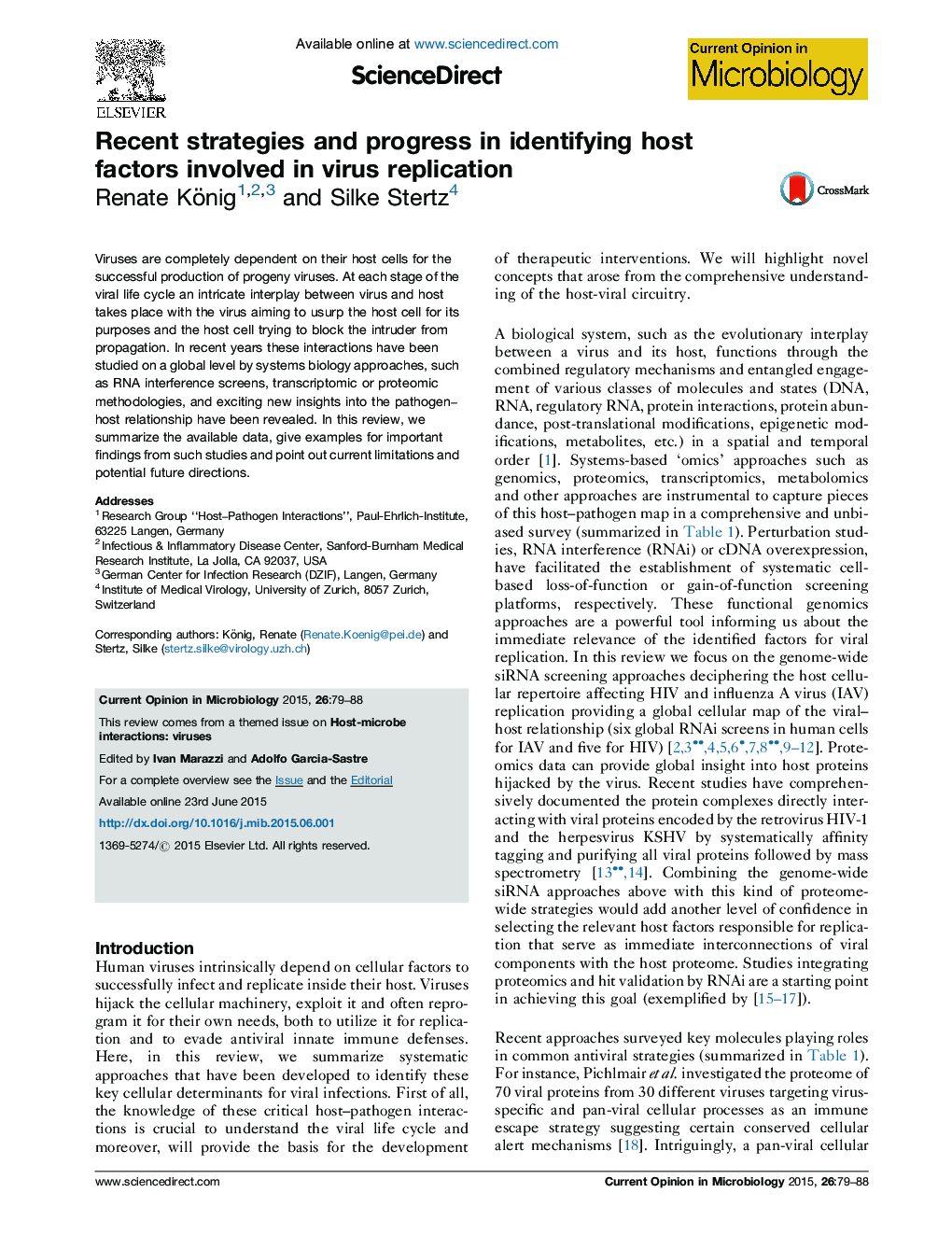| Article ID | Journal | Published Year | Pages | File Type |
|---|---|---|---|---|
| 3399037 | Current Opinion in Microbiology | 2015 | 10 Pages |
•A plethora of systems biology datasets on virus–host interactions are available.•These include transcriptomic, proteomic and RNAi screening approaches.•The studies revealed exciting new aspects and opened up new areas of research.•Current limitations: use of artificial assay systems, limited perturbation and difficult comparison of datasets.•Future directions: platform for primary data, tools to compare datasets, CRISPR/cas9 technology.
Viruses are completely dependent on their host cells for the successful production of progeny viruses. At each stage of the viral life cycle an intricate interplay between virus and host takes place with the virus aiming to usurp the host cell for its purposes and the host cell trying to block the intruder from propagation. In recent years these interactions have been studied on a global level by systems biology approaches, such as RNA interference screens, transcriptomic or proteomic methodologies, and exciting new insights into the pathogen–host relationship have been revealed. In this review, we summarize the available data, give examples for important findings from such studies and point out current limitations and potential future directions.
